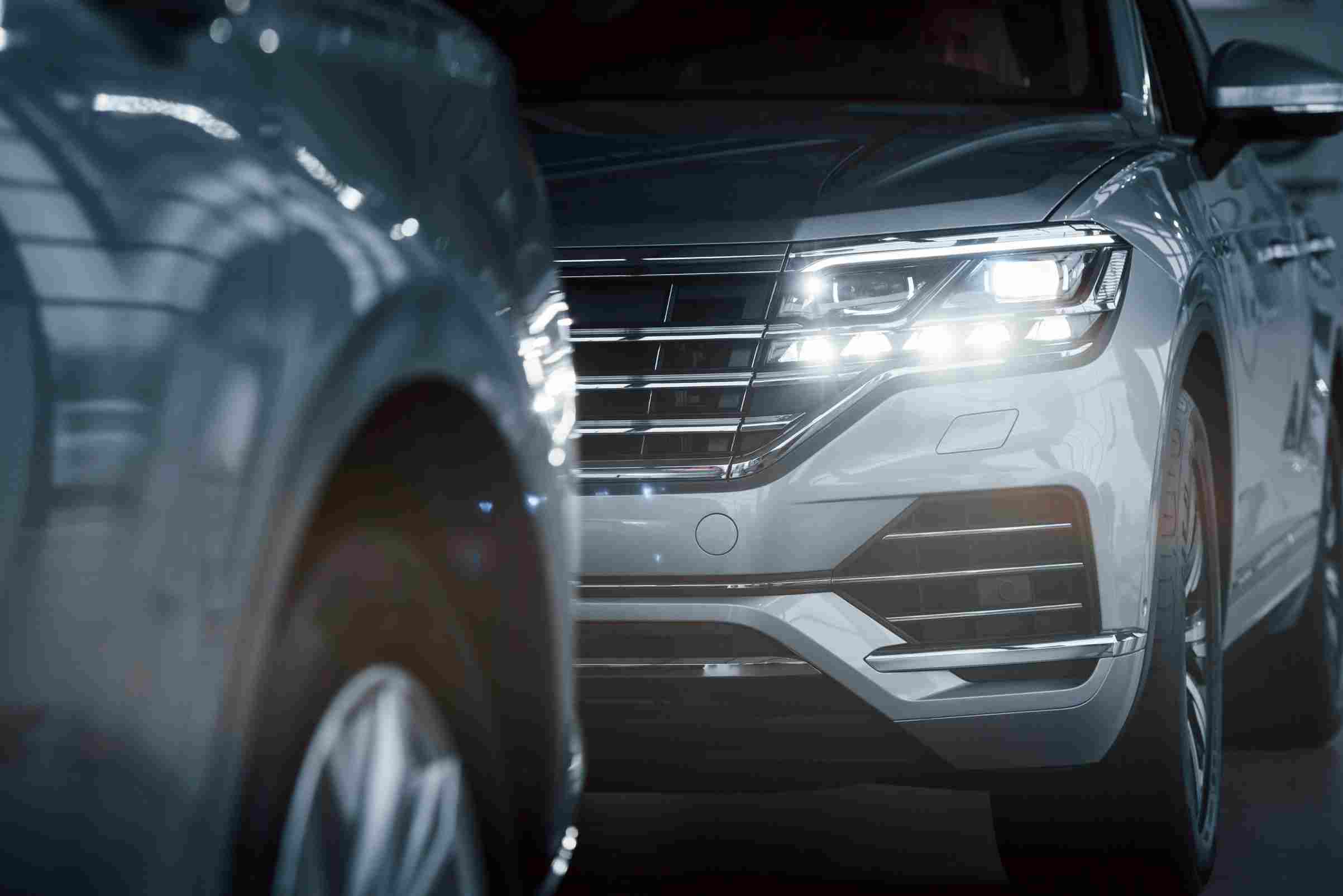9000+ Cashless Garages
96% Claims Settled (FY 24-25)

9000+ Cashless Garages
96% Claims Settled (FY 24-25)



When exploring options for four-wheelers that provide more capacity and luxury than a sedan, crossovers and SUVs are the first things that come to mind. Although these two car types almost resemble each other, a few key features differentiate them.
Are you wondering which one will be better suited to your driving style and needs? Below is a comprehensive analysis of crossover vs. SUV so you can make an informed decision.


An SUV or Sports Utility Vehicle is skillfully crafted for different purposes across various road conditions. These are large, powerful, and efficient cars with towing capabilities similar to pickup trucks. Moreover, they showcase more comfortable and spacious features than a crossover.
Key characteristics of an SUV include:
SUVs generally have 8.5 inches of clearance or more, which allows the driver to move effortlessly over obstacles and rough terrain.
SUV engines boast higher horsepower, helping you achieve high speeds while carrying more load. Additionally, these cars are aerodynamically sound and offer excellent torque, thus enhancing overall performance.
In SUVs, additional design elements make them even more aligned with everyday usage. These include ample boot space, a spacious cabin, easy access to features and a fuel-efficient engine.
Most SUVs have features like a traction control system (TCS), lane-keeping assistance cameras, exclusive driver assistance features, and many others, ensuring high on-road safety.
In India, you can find all these desirable features in SUVs like Tata Nexon, Mahindra Thar, Maruti Brezza, Volkswagen Taigun and Skoda Kushaq, just to name a few.
A crossover, often called a compact utility vehicle, is designed on a unitary architecture. It signifies that the car’s frame and body form a single unit, unlike in SUVs, where you can see a body-on-frame construction. This vehicle type is named so as it combines the design features of a traditional car and SUV.
Some standout characteristics of a crossover are:
Crossovers offer raised ride heights, which make getting in and out of a vehicle much smoother. Moreover, it provides in-cabin features that are advantageous for people with restricted mobility.
Despite having a compact form factor compared to SUVs, crossovers rarely disappoint regarding legroom. Moreover, they can seat between 4 and 7 people, making them ideal for group outings.
These cars are known for fuel efficiency because they are lighter than SUVs. Some modern-day crossovers are almost as proficient in mileage as diesel variants and are comparatively more affordable than SUVs.
When checking out the crossover segment, you will notice numerous types of car models, starting from large versions to compact vehicles. Each model is designed to serve specific purposes.
Some of the most popular crossover cars in India are the Tata Punch, Renault Kwid, Maruti Suzuki Ignis, Hyundai Venue, and Kia Sonet.
Learn the major differences between SUVs and crossover vehicles by going through the table below:
Following are some of the major benefits of SUVs:
It is likely the most sought-after quality among SUV enthusiasts. Whether you prefer a larger cargo space or more cabin area, these cars rarely disappoint. Based on the model you pick, SUVs may accommodate up to 8 people and provide you with at least 100 cubic feet of boot space.
SUVs with higher ground clearance and powerful engines are one of a kind for climbing uneven terrains or treading across steep landscapes. Moreover, their 4x4 drivetrain enables these vehicles to handle rough trenches, mud or snow efficiently. So, consider driving them if you encounter such road conditions at some point in the year.
Due to their body-on-frame structure, which was originally designed for trucks, full-size SUVs can tow up to 4,500 kg. This hauling characteristic makes an SUV different from any other passenger car.
Despite all the benefits, SUVs also come with their fair share of drawbacks:
Owing to its heavy weight, SUVs are less aerodynamic, making them comparatively less fuel-efficient than crossovers. They also have larger engines, which contribute to greater fuel consumption.
The maintenance costs of an SUV are relatively higher compared with average hatchbacks, sedans, or crossovers. This is primarily because SUVs require more expensive tyres, greater quantities of fuel, and other fluids throughout their usage.
SUVs are much bigger than other passenger cars. However, their spaciousness comes at a cost, as they can be a bit difficult for a beginner driver to park or manoeuvre in heavy traffic conditions.
Crossovers have the upper hand over SUVs in many aspects, especially if you choose them in urban settings. Here, we have mentioned a few of their advantages:
Though smaller than SUVs, a subcompact crossover can comfortably accommodate a family of four. They also provide sufficient boot space, making them a perfect vacation-friendly vehicle. Full-size crossovers like the Audi Q7 and Honda Pilot can carry up to 7 people owing to their folding middle-row seats.
Third-party crash tests and safety rating assessments mostly give crossovers 5-star ratings in terms of safety and security. This is because automakers build these cars by prioritising the on-road safety of families.
The overall lightweight structure and more aerodynamic characteristics make crossovers more fuel-efficient than SUVs. Additionally, some of the most recent models are fitted with an energy-saving hybrid powertrain, thus capitalising more on this aspect.
Listed below are some of the drawbacks of crossover vehicles:
Due to its unibody design, the entire crossover’s platform receives a shock if it is involved in an accident. As a result, repair costs can increase despite the presence of different crumple zones integrated to minimise the impact of crash energy.
Off-roading vehicles need a perfect balance of rigidity, mobility, and high-ground clearance. Crossovers fall slightly short in these features and their engines have modest power. Therefore, you should only consider them for occasional trailing and off-roading.
While both crossovers and SUVs offer many similar features, the former type tends to be more environmentally friendly. This is because crossovers are comparatively lighter in weight and feature less demanding engines. This, in turn, results in better fuel efficiency and lower emissions.
Additionally, many crossovers are available as hybrid or electric vehicles, reducing their environmental impact. Though sports utility vehicles can also be hybrid, still their larger size and heavier weight can offset the associated benefits.
Regardless of the brand you pick, these are a few things you should verify before purchasing a used crossover or SUV:
Like the overall condition of your preferred used vehicle, its age also matters. The best scenario would be to buy a used crossover or SUV that is still in its warranty period, as this can significantly reduce repair and replacement costs.
Checking the documents is another crucial task as it helps avoid serious legal liabilities. Therefore, you must verify papers like the car registration certificate, insurance, previous receipts of road tax payments, and other relevant documents.
Popular reviewing platforms make it easy to find performance-related reviews and safety-concern-related comments about a car model online. You can read these to gain neutral feedback before purchasing a specific model.
Finally, you have to decide whether you are willing to drive a diesel-run car or a petrol-driven vehicle. Petrol-powered four-wheelers typically provide low mileage, but diesel cars can attract greater upfront costs when purchased. Therefore, it's important to weigh your options carefully.
Check out the top 5 best-selling SUVs in India below:
Following are some of the most popular crossovers for 2025:
This detailed analysis of crossover vs SUV here will showcase the impressive features of both car types. Going forward, you can promptly refer to this guide before deciding which variant and model best suits your needs.